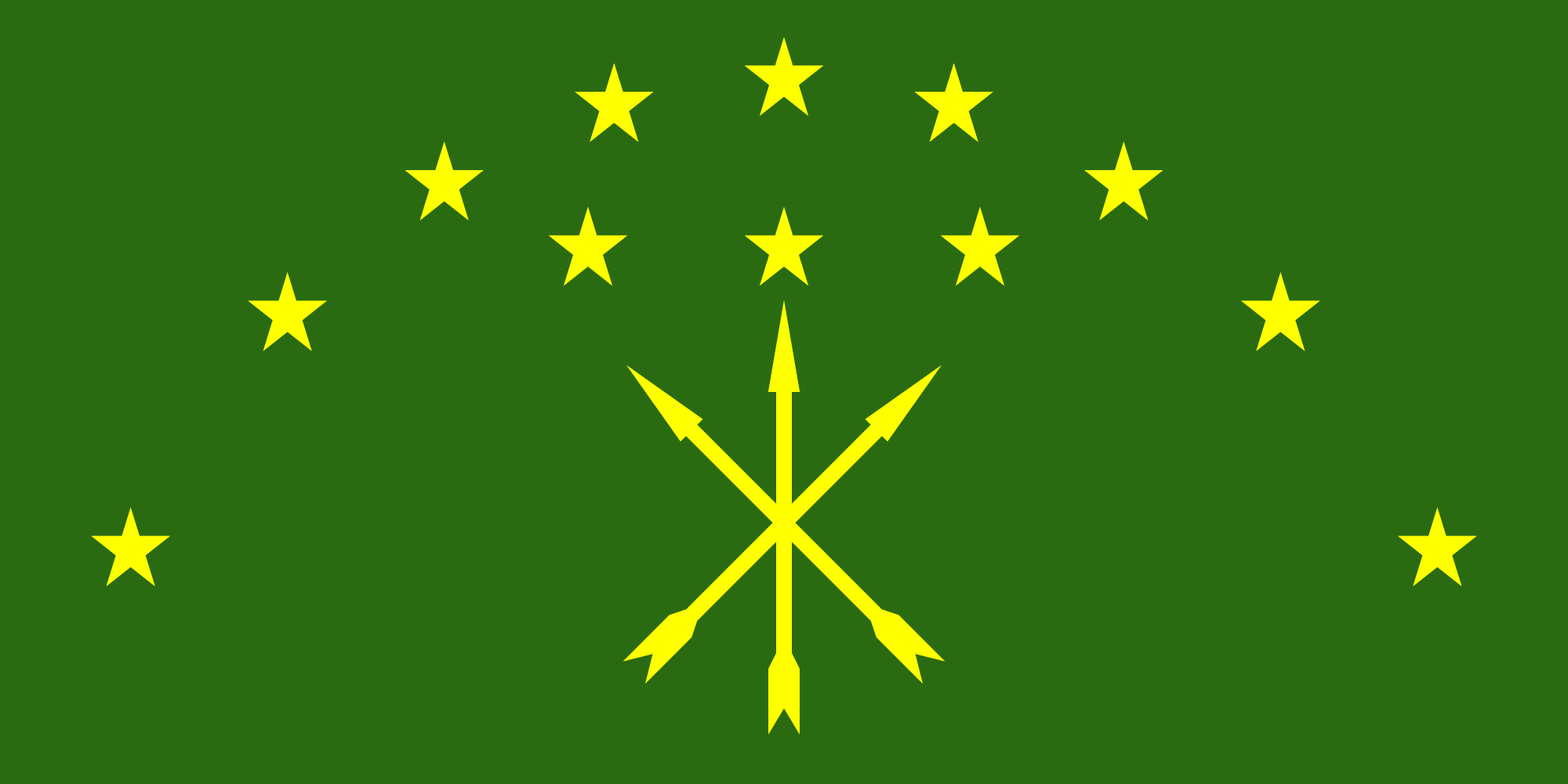Vector Flag Republic of Adygea
Republic of Russia; federal subject of Russia
More Info
The Circassian flag or the flag of the Republic of Adygea, is a flag consisting of a green field charged with twelve gold stars, nine forming an arc and three horizontal. It is also charged with three crossed arrows in the center. The green color rgb values (5 63 13), and the gold colors rgb values (255 223 0). The Scot David Urquhart (1805-1877), then serving on the staff of the British Embassy in Constantinople, allegedly designed the prototype in 1836, taking inspiration from early Circassian symbols advocated by Qalawebateqo Shuwpagwe and the modern design was finalised by Sefer Bey Zanuqo. The green represents Islam, the forests and vegetation of the Caucasus. The twelve stars symbolize the individual tribes of Adygea; the nine stars within the arc symbolize the nine aristocratic tribes of Adygea, in contrast to the three horizontal stars which symbolize the three democratic tribes. The arrows symbolize peace. The gold colors of the arrows and stars represent a bright future and the plentiful harvest of grain and wheat. The original design of the flag was drawn in 1830 by prince Sefer Bey Zanuqo and was hand-delivered by the British delegate James Stanislaus Bell to the Adyghe Nour Mohamed Hag'ur in Gesh Valley (present-day Sochi) where it flew for the first time to cheers from Adyghe princes and a multitude of people. The Adyghe people used this design in the 19th-century fight against the Russian Empire. The Republic of Adygea adopted the present-day flag in a law of March 24, 1992. The proportions are 2:1. This flag reflects and revives the unity of the Adyghe Nation in Circassia; besides the Adyghes in the Republic of Adyghea, it also represents the Kabardians in Kabardino-Balkaria, the Cherkess (Adyghe: Шэрджэс) in Karachay–Cherkessia, and the Shapsugs in the southern part of Krasnodar Krai, plus small Adyghe groups in Stavropol Krai and North Ossetia.
Source: Wikipedia